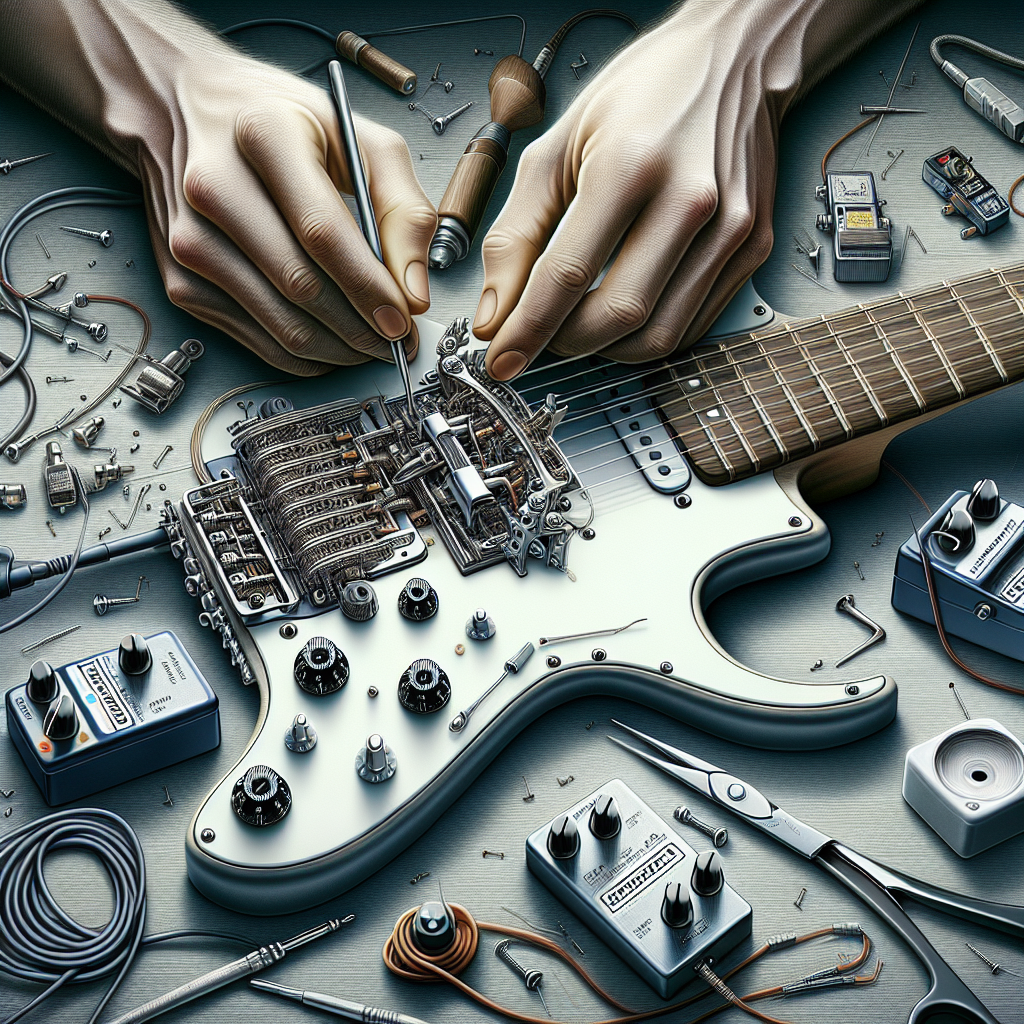
How to Set Up a Floating Tremolo System: 7 Powerful Tips for Perfect Tuning
If you’re a guitarist aiming for versatility, having a floating tremolo system on your guitar can offer a vast range of pitch modulation. Despite their vast capabilities, setting up a floating tremolo can actually be challenging. Fortunately, with patience and a few simple steps, you can master this and achieve optimal performance and tuning stability. This article explores how to set up a floating tremolo system, reducing the mystery and complications associated with it.
Floating tremolos, or vibrato systems, allow you to change the pitch of your guitar in both directions, making them popular among rock and metal musicians. Yet, understanding how to set up and maintain these intricate systems is critical for any guitarist aiming to leverage the full potential of their instrument with the added benefit of boosting your playing possibilities significantly.
1. Gather the Necessary Tools
Before diving into the setup process, ensure you have all the essential tools at hand:
- Phillips-head screwdriver
- Allen wrenches (often supplied with the tremolo system)
- String winder
- Electronic tuner
- Capo
Having these tools organized before you begin the setup will make the task much smoother and prevent any unnecessary interruptions.
2. Understand the Anatomy of Your Tremolo System
A floating tremolo system typically includes components like:
- The tremolo block
- Springs within a cavity at the back of your guitar
- The tremolo bridge
- Saddle and fine tuners
Familiarizing yourself with these components will ensure you can follow each step of the setup process with confidence.
3. Install and Secure the Strings
First, install your guitar strings securely. As you thread the strings through the bridge to the tuning pegs, make sure each is tightly secured, especially at the nut and saddle. Use a string winder for a quicker installation. Tune the strings in the initial round to approximate pitch using an electronic tuner. The balancing of your floating tremolo depends on the tension of these strings, so this initial tuning step is crucial.
4. Balance the Tremolo System
Next, balancing the tension between the strings and the tremolo springs takes patience but is essential. The tremolo plate should sit parallel to the guitar body. Adjust the spring tension by tightening or loosening the screws located in the back cavity of the guitar. A good baseline is to start with the bridge nearly level with the body, then make minute adjustments while checking the tuning.
5. Fine-Tune and Lock the System
Once a balance is achieved, use the fine tuners located on the bridge for precise pitch adjustments. Lock your nuts if your guitar is equipped with a locking system. Double-check your tuning and continue making small adjustments until the guitar remains in tune when using the tremolo arm.
FAQs
1. What is a floating tremolo system?
A floating tremolo system is a type of bridge that allows the guitar to change the pitch of its strings both up and down. Unlike fixed bridges, floating systems can provide a wider range of sounds and allow for more articulate musical expression.
2. Why is my tremolo system not staying in tune?
This issue often arises due to improperly balanced string and spring tension, worn-out components, or inadequately secured strings. Regular maintenance and proper setup are crucial for tuning stability.
3. Can all guitars be fitted with a floating tremolo?
Not all guitars are compatible with floating tremolo systems. Typically, they are pre-installed on guitars designed to feature tremolo use, like those in rock or metal genres.
4. How often should I adjust my tremolo system?
Frequent adjustments aren’t usually required, but you should make adjustments if you change string gauges or notice it drifting out of tune more frequently.
5. Is it necessary to have my guitar professionally set up?
While it’s advisable for beginners or players unsure of their skills to consult a professional for their first setup, experienced players can often do the setup themselves with patience and practice.
6. How does string gauge affect the setup of a floating tremolo?
The string gauge affects tension, which in turn impacts how the tremolo system is balanced. Switching to a different string gauge will generally require a new setup to maintain balance and tuning stability.
Conclusion
Understanding how to set up a floating tremolo system is a rewarding experience, allowing you to make the most out of your guitar’s potential. With just a few tools and steps, you can ensure your instrument is in top shape, providing the versatility and expressiveness you need for an outstanding performance. By putting effort into the setup, you’ll enjoy improved tuning stability and the expressive potential of your guitar’s tremolo system.
For more details on floating tremolo systems, you can visit this comprehensive guide by Fender.